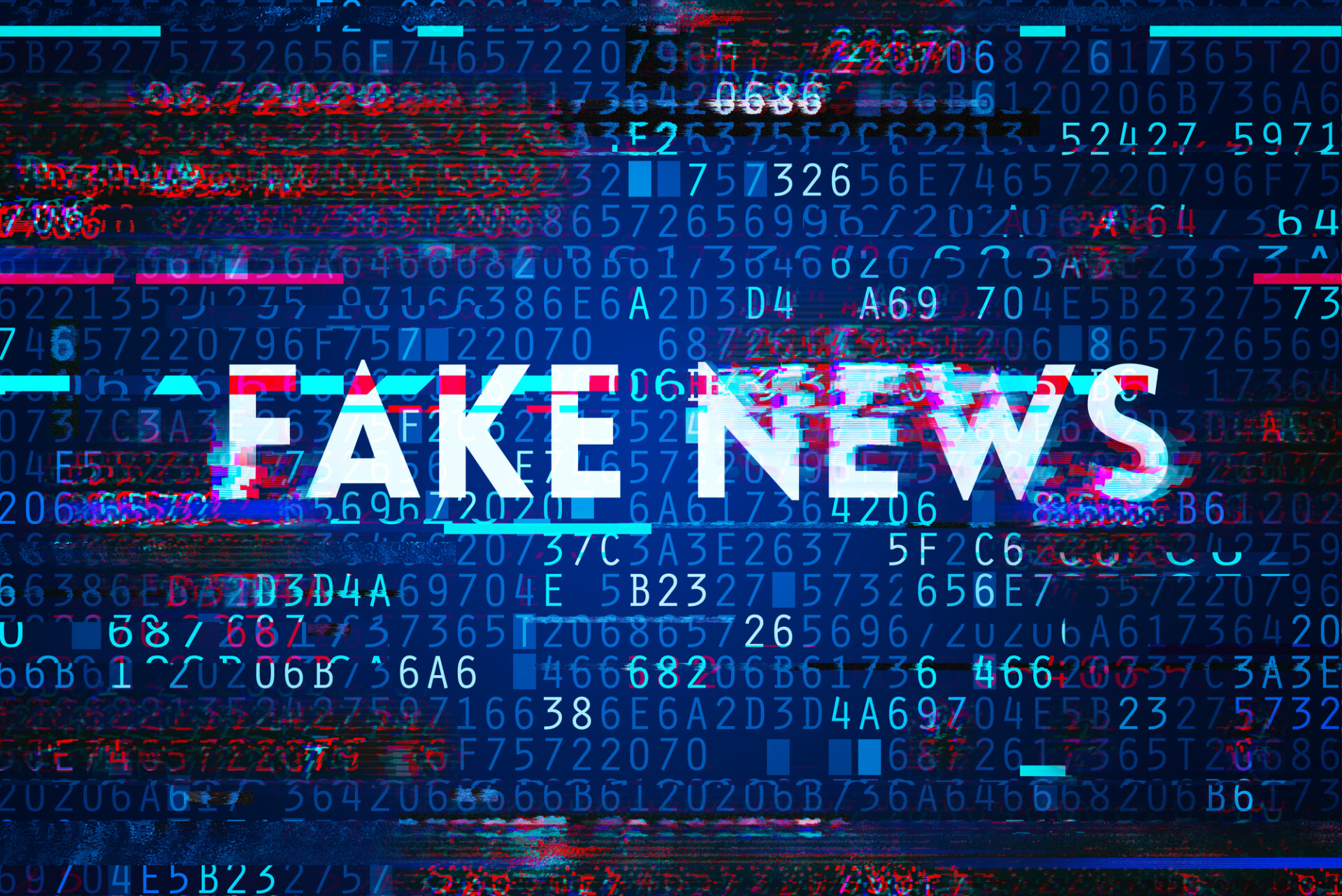The body armor market can seem enormous and super innovative from the outside. Social media posts, glowing press releases, and industry buzz often highlight advanced materials, impressive new gear, and major contracts with customers around the globe. At first glance, you might picture a booming marketplace where everyone is racing to create the best protection. But look a bit closer, and you’ll find a smaller, more tightly connected community than you’d expect—one where personal connection, trade shows, online forums, and word-of-mouth carry a lot of weight.
In this environment, platforms like BodyArmorNews.com play a crucial role in fighting fake news. By providing accurate, verified information and exposing misinformation, these platforms help create a more transparent and trustworthy industry, ensuring that buyers and manufacturers alike can rely on facts rather than false claims.
In such a close-knit environment, stories—both true and untrue—travel quickly. A single claim about a revolutionary armor plate can bounce from inbox to inbox, phone call to phone call, and soon become accepted as fact. This is where fake news thrives. Unlike honest mistakes, fake news involves deliberate attempts to mislead, with fabricated claims designed to trick buyers, investors, or other stakeholders. Once a false narrative gains traction, it can be tough to correct, leaving a trail of confusion and mistrust.
Fake Body Armor News About Product Performance
One of the most common areas for fake news involves claims about what body armor can do. Some companies insist their plates can stop bullets never tested against them, or that their vests can handle multiple hits without losing effectiveness—all without providing genuine proof. Others may boast about lightweight materials that promise exceptional protection and comfort at minimal cost yet fail to back these boasts with reliable data.
This kind of misinformation distorts the marketplace. Buyers might expect a performance that simply isn’t possible with current technology. At best, this leads to disappointment; at worst, it puts people at serious risk if they enter dangerous situations trusting equipment that doesn’t meet the hype. Meanwhile, honest manufacturers of body armor struggle to compete with grand promises backed only by empty words. Conducting thorough testing and collecting real data takes time and money while making up a flashy story is quick and cheap.
Fake Press Releases and Fake Growth
Sometimes the inspiration to tackle this topic comes from real-life examples. After working on this article for several weeks, I came across a recent press release from an industry company—names withheld to protect the identities of these “misinformation specialists.” This particular announcement was a glowing review of an incredible production ramp-up, record-breaking sales, and astonishing business growth tied to a new product. Yet none of the claims came with verifiable proof. It was all talk and no data; a perfect snapshot of how fake news can warp perceptions and mislead those looking for solid facts.
Such exaggerated claims don’t just appear in isolation. Companies often trumpet sales figures, production runs, and partnerships without providing any concrete documentation. Their goal is to generate buzz, attract investors, or impress new buyers who may be unfamiliar with the industry’s standards. But when you dig deeper and look for real numbers, contracts, or certifications, there’s often nothing there.
For investors new to the field, this can be especially damaging. They might believe they’ve discovered a rising star and sink their money into a business built on empty words. Buyers, too, might trust these claims as signs of a stable provider. Over time, these fake success stories corrode trust, making it harder for genuinely honest companies to stand out. Eventually, even true achievements face skepticism, slowing real progress and harming everyone involved.
The Challenge of Finding the Truth
Figuring out what’s real and what’s fake can feel like trying to solve a puzzle with missing pieces. Law enforcement agencies, military units, and security professionals need reliable armor that lives up to its promises. Investors want to support businesses that have genuine staying power, not just fancy marketing. Yet without proper data, trustworthy certifications, and independent assessments, anyone can be fooled by clever fiction.
It’s easy to publish a glowing press release or share a rumor online. It’s much harder to conduct thorough laboratory tests, earn recognized certifications, and make these results publicly available. But that’s exactly the kind of effort needed to bring clarity to the marketplace.
Stopping Fake News With Real Evidence
The best shield against fake news is solid, verifiable proof. In the body armor world, that proof comes from a combination of trusted laboratory tests, recognized certifications, a proven track record of past performance, and honest feedback from end-users who have relied on the gear in real situations.
Real testing isn’t just about firing one round and calling it a day. Proper ballistic tests follow strict procedures, consider multiple angles and impact points, and sometimes involve tough conditions like heat or moisture. These steps show how armor behaves in real-world scenarios, not just under ideal circumstances.
When companies provide official ballistic lab reports, consistent performance data over time, and testimonials from professionals who have worn the armor in the field, buyers and investors get a clearer, more accurate picture. A product claim like “Our plate stops these bullets” means a lot more when supported by certified test results, long-term use records, and positive reviews from people whose lives depend on it.
Resources That Confirm the Facts
Even with test results and certifications in hand, some people may not know how to interpret the data. That’s where additional resources come into play. Industry guides, training materials, and published standards can help explain what specific ratings mean and why certain testing methods are more reliable. Looking at multiple sources—such as manufacturer specifications, independent analyses of standards, historical product records, and candid end-user feedback—helps paint a complete picture.
Instead of believing a single claim at face value, informed buyers and investors compare different types of information and ensure the facts line up. When certified tests, recognized standards, long-term records, and customer testimonials all support each other, fake news has a harder time gaining ground.
The Cost of Believing Fake News
Falling for fake news can have serious consequences. If law enforcement officers rely on armor that doesn’t meet advertised standards, they’re put in harm’s way. Public trust in protective equipment can erode when stories of gear failing to perform become known.
Investors who bet on a company’s false success stories stand to lose financially once the truth emerges. Honest companies also get hurt, as they must compete with flashy claims that cost little to produce. Real innovation might struggle to gain attention amidst exaggerated claims of “game-changing” products. Overall, everyone loses when fake news overshadows honest efforts and genuine progress.
Calling for Truth and Honesty
The body armor industry can move past fake news if all parties pull together. Companies should present real data instead of empty promises. They should encourage independent testing and share results openly. Buyers—from government agencies to private security firms—should ask tough questions, demand certifications, and require concrete proof of performance before making big purchases. Investors can protect themselves by insisting on hard evidence, not just polished press releases.
Regulatory bodies and standards organizations can also strengthen the landscape. By enforcing guidelines that require companies to back their claims with verifiable proof, these groups help ensure that fake news can’t flourish. The more everyone demands honesty, the less room there is for false narratives to grow.
Building a Future on Real Facts
Picture a future where the body armor market runs on verified data and transparent reporting. Companies that invest in genuine research, thorough testing, and quality materials will rise to the top naturally, without resorting to dubious claims. Buyers will choose gear based on proven capabilities rather than guesswork. Investors will confidently support businesses with solid records. This healthier environment allows true innovation to shine, improving safety and reliability for everyone.
With fake body armor news out of the way, researchers can develop better materials and testing methods, and manufacturers can refine their products using honest feedback and real-world results. The entire chain of trust—from the people making the materials to those wearing the final product—becomes stronger, more dependable, and more respected.
Reaching this point requires patience and persistence. It means asking more questions, waiting for official test results, and resisting the urge to believe something just because it sounds exciting. Yet the payoff is worth it: a safer, more trustworthy industry that genuinely serves those who rely on its products.
Take Action to Support Transparency
If you’re a buyer, ask for test reports and certifications before purchasing new armor. If you’re an investor, demand verified performance data rather than settling for big claims. And if you’re part of a regulatory group, keep pushing for stricter rules that call out dishonest practices. By staying informed, sharing reliable information, and refusing to accept unsupported claims, you become part of a movement that values truth and protects everyone involved.
About the Author:
Mike Bundy, Founder and CEO of IntelAlytic, is a respected figure in the defense and public safety sectors, focusing on body armor and materials designed to stop bullets and other threats. Before founding IntelAlytic, Mike led one of America’s top body armor companies, gaining firsthand experience in engineering, production, testing, quality control, and global supply chain management. At IntelAlytic, he and his team use data, technology solutions, and support services to help defense and public safety organizations improve safety and performance. Connect with Mike on LinkedIn or visit www.intelalytic.com to learn about our company and services.








